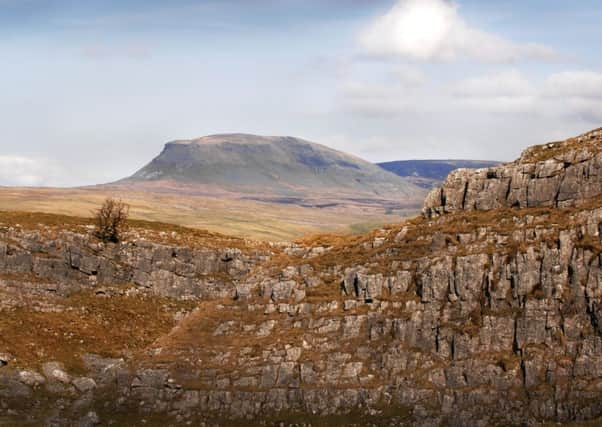Roger Ratcliffe: Country & Coast


I would happily give that part of the Dales a wide berth at this time of year, but the annual invasion of Three Peakers happens to coincide with the finest festival of wildflowers to be found anywhere in Yorkshire.
Thankfully, however, the long crocodiles of walkers you see strung between the summits of Pen-y-ghent, Whernside and Ingleborough - many of them raising vital funds for good causes, I should add - bypass the most interesting floral displays. The only real issue I have to contend with is finding somewhere to park.
Advertisement
Hide AdAdvertisement
Hide AdIt always amazes me that within five minutes of leaving behind the razzmatazz of colour-coordinated baseball caps, t-shirts and support vehicles I usually have the landscape to myself. That’s because, incredibly, few people know about Natural England’s Ingleborough National Nature Reserve, which extends for more than 2,500 acres to the north of the summit and consists of large areas of flower-rich meadows and pastures, heather moor and the best-preserved expanses of limestone pavement anywhere in the world.
Last weekend I walked up the track from Ribblehead and entered the reserve across the wet uplands of Colt Park to reach Gauber High Pasture.
In some places the grass here was bright yellow with globe-flowers, so-named because the petals are curved over the top creating the impression of a sea of yellow ping-pong balls. Elsewhere, bird’s-eye primroses spread like a lush lilac carpet.
From there I headed over to the extensive limestone pavements at Southerscales, actually a reserve within the reserve and managed by the Yorkshire Wildlife Trust.
Advertisement
Hide AdAdvertisement
Hide AdThe pavements here and lower down at Scar Close have been subjected to a process of so-called “re-wilding”. The natural vegetation is being regenerated by not allowing it to be grazed by sheep, which for hundreds of years have denuded much of the Yorkshire Dales of trees and scrub.
It is three years since I walked over this area of pavement and I was surprised to find how much nature has taken over in that time.
The treacherous mosaic of deep grykes - slippery when wet and a broken leg waiting to happen with almost every step - used to be nimbly negotiated by sheep, which ate everything they could reach. Now, rowan and hazel trees are sprouting up everywhere and plants which never stood a chance because of the sheep are once more growing in profusion.
Two rare species, the limestone fern and baneberry, have begun to thrive in the grykes. There are also lilies of the valley, bloody cranesbill, devil’s-bit scabious, and even melancholy thistle. Yet this treasure house of flora - unique in Yorkshire - is just minutes away from those crowds of Three Peakers.